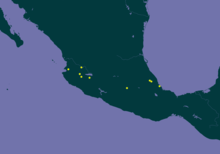
Amanita muscaria, commonly known as the fly agaric or fly amanita, is a basidiomycete of the genus Amanita. It is a large white-gilled, white-spotted, and usually red mushroom.

Edible mushrooms are the fleshy fruit bodies of several species of macrofungi. Edibility may be defined by criteria including the absence of poisonous effects on humans and desirable taste and aroma. Edible mushrooms are consumed for their nutritional and culinary value. Mushrooms, especially dried shiitake, are sources of umami flavor.

The genus Amanita contains about 600 species of agarics, including some of the most toxic known mushrooms found worldwide, as well as some well-regarded edible species. The genus is responsible for approximately 95% of fatalities resulting from mushroom poisoning, with the death cap accounting for about 50% on its own. The most potent toxin present in these mushrooms is α-Amanitin.
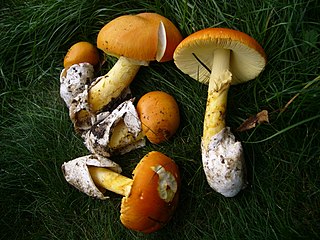
Amanita caesarea, commonly known as Caesar's mushroom, is a highly regarded edible mushroom in the genus Amanita, native to southern Europe and North Africa. While it was first described by Giovanni Antonio Scopoli in 1772, this mushroom was a known favorite of early rulers of the Roman Empire.
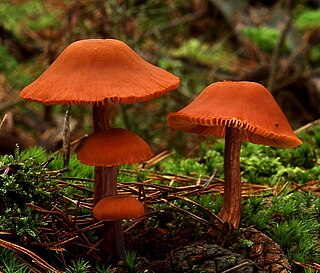
Laccaria laccata, commonly known as the deceiver, lackluster laccaria, or waxy laccaria, is a white-spored species of small edible mushroom found throughout North America and Europe. It is a highly variable mushroom, and can look quite washed out, colorless and drab, but when younger it often assumes red, pinkish brown, and orange tones. The species is often considered by mushroom collectors to be a 'mushroom weed' because of its abundance and plain stature.

Amanita calyptroderma also known as coccora, coccoli or the Pacific amanita, is a white-spored mushroom that fruits naturally in the coastal forests of the western United States during the fall and winter and spring.

Schizophyllum commune is a species of fungus in the genus Schizophyllum. The mushroom resembles undulating waves of tightly packed corals or loose Chinese fan. "Gillies" or "split gills" vary from creamy yellow to pale white in colour. The cap is small, 1–4 centimetres wide with a dense yet spongey body texture. It is known as the split-gill mushroom because of the unique longitudinally divided nature of the "gills" on the underside of the cap. This mushroom is found throughout the world.

Agaricus campestris is a widely eaten gilled mushroom closely related to the cultivated A. bisporus. A. campestris is commonly known as the field mushroom or, in North America, meadow mushroom.

Amanita flavoconia, commonly known as yellow patches, yellow wart, orange amanita, yellow-dust amanita or the American yellow dust amanita, is a species of mushroom in the family Amanitaceae. It has an orangish-yellow cap with yellowish-orange patches or warts, a yellowish-orange annulus, and a white to orange stem. Common and widespread throughout eastern North America, A. flavoconia grows on the ground in broad-leaved and mixed forests, especially in mycorrhizal association with hemlock.
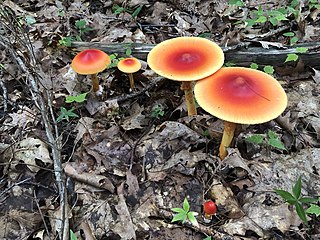
Amanita jacksonii, also known as Jackson's slender amanita, American Slender Caesar, and Eastern Caesar's Amanita, is a North American species of fungus in the family Amanitaceae. It is a reddish-orange colored mushroom species which can be identified by its yellow gills, large, white, sacklike volva.

Amanita rubrovolvata, commonly known as the red volva amanita, is a species of fungus in the family Amanitaceae. The fungus produces small to medium-sized mushrooms, with reddish-orange caps up to 6.5 millimetres wide. The stems are up to 10 cm (4 in) tall, cream-coloured above the ring and cream to yellowish below it. The stem ends in a roughly spherical bulb at the base, which is covered with bright orange patches.

Amanita crocea, the saffron ringless amanita, is a species of Amanita widely distributed in Europe. It is not recommended for consumption due to its similarity to poisonous species of the genus.
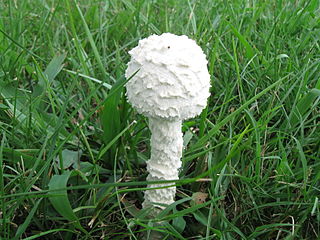
Saproamanita thiersii, commonly called Thiers' lepidella, is a North American saprotrophic basidiomycete fungus in the genus Saproamanita. It is a white, small mushroom. Its cap is convex, measuring 3.5–10 centimetres across, and the stipe is 8–20 cm (3–8 in) long. The spore print is white.

Amanita ceciliae, commonly called snakeskin grisette, strangulated amanita, and the Cecilia's ringless amanita, is a basidiomycete fungus in the genus Amanita. First described in 1854 by Miles Joseph Berkeley and Christopher Edmund Broome, it was given its current name by Cornelis Bas in 1984. It is characterized by bearing a large fruit body with a brown cap 5–12 cm (2.0–4.7 in) across. The cap has charcoal-grey patches, which are easily removable. The stipe is 7–18 cm (2.8–7.1 in) long, white in colour, and there is no ring on it. It is slightly tapered to the top, and has irregular cottony bands girdling the base. The universal veil is grey. Spores are white, spherical in shape, non-amyloid, and measure 10.2–11.7 micrometres. The mushrooms are considered edible, but field guides typically advise caution in selecting them for consumption, due to risks of confusion with similar toxic species. A. ceciliae is found in woods throughout Europe and North America, where it fruits during summer and autumn.

Amanita augusta is a small tannish-brown mushroom with cap colors bright yellow to dark brown and various combinations of the two colors. The mushroom is often recognizable by the fragmented yellow remnants of the universal veil. This mushroom grows year-round in the Pacific Northwest but fruiting tends to occur in late fall to mid-winter. The fungus grows in an ectomycorrhizal relationship with hardwoods and conifers often in mixed woodlands.

Amanita wellsii or the salmon amanita is a species of agaric fungus in the family Amanitaceae. It was described by American mycologist William Alphonso Murrill in 1920, based on collections made in Springfield, New Hampshire in 1917. The specific epithet honors Professor H. L. Wells, who had previously studied the species.
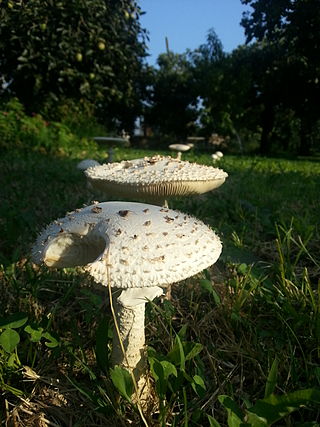
The genus Saproamanita contains about 24 species of agarics and is one of six genera in the family Amanitaceae, of which the similar Amanita is also a member. Saproamanita differs from Amanita in that its species are saprophytic, and not ectomycorrhizal.
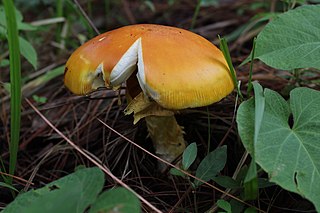
Amanita basii is a mushroom of the family Amanitaceae.

Amanita crenulata, also known as the poison champagne amanita, is a species of fungus that is very common in the Northeast United States.

